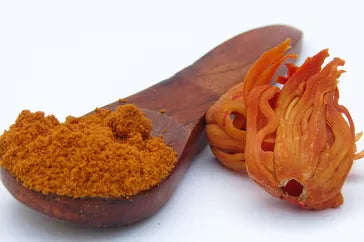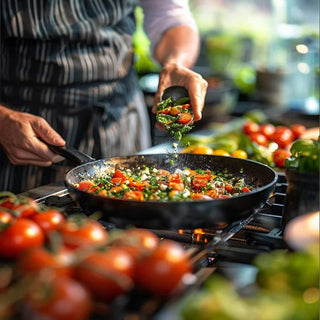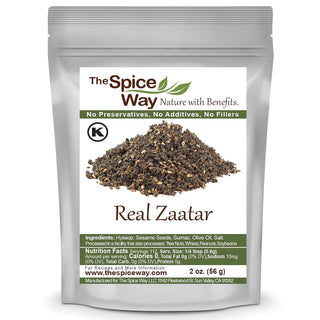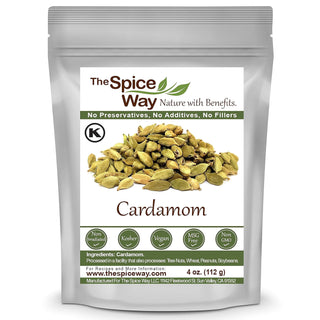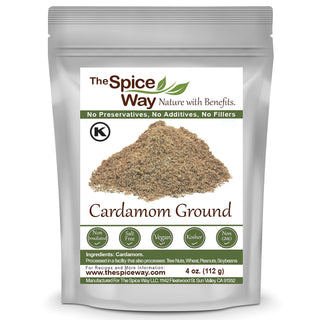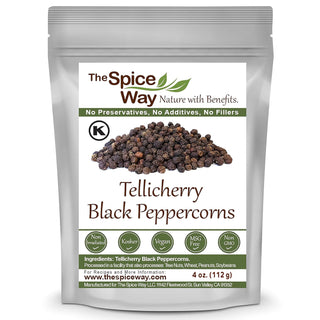When stocking your spice rack, staples like cinnamon, pepper, and cumin often take center stage. But one underrated spice deserves a spot right next to them—mace. With its warm, aromatic flavor and impressive health benefits, mace is a powerhouse ingredient that can elevate your cooking and wellness routine. Whether you're a seasoned chef or a curious home cook, here’s why mace should be in your spice rack.
What is Mace?
Mace is the lacy, red covering (called the aril) that encases the seed of the nutmeg fruit. Once dried, it turns a golden-orange color and is either sold whole (as blades) or ground into a fine powder. While it comes from the same plant as nutmeg, mace has a more delicate, slightly sweet and peppery flavor, with hints of citrus and cinnamon. It’s often described as spicier and more refined than nutmeg.
Culinary Uses of Mace
Mace’s unique flavor profile makes it incredibly versatile in the kitchen. Here’s how you can use it:
-
Baking: Add ground mace to cakes, cookies, doughnuts, or muffins for a warm, aromatic depth.
-
Soups and Stews: A pinch of mace can enhance broths, curries, and creamy soups.
-
Savory Dishes: Mace is a classic addition to meat and poultry sausages, pâtés, and spice rubs.
-
Rice and Grain Dishes: Add a blade of mace while cooking rice or pilafs for an infused, subtle flavor.
-
Beverages: Sprinkle it in chai, mulled wine, or spiced cider for a seasonal twist.
Health Benefits of Mace
Mace isn't just flavorful—it also brings various health benefits thanks to its essential oils, antioxidants, and nutrients. Here are some of the top perks:
1. Supports Digestion
Mace has traditionally been used to relieve digestive discomfort such as bloating, gas, and nausea. Its natural compounds help stimulate appetite and improve gastrointestinal function.
2. Anti-Inflammatory Properties
Mace contains compounds like myristicin and eugenol, which have natural anti-inflammatory and pain-relieving effects. It can be a helpful addition for those managing joint pain or inflammation.
3. Rich in Antioxidants
Antioxidants in mace help combat oxidative stress, which contributes to aging and chronic diseases. Including antioxidant-rich spices like mace supports overall health and immune function.
4. Improves Mental Health
Myristicin, found in Mace, has been shown to support cognitive function and mood. In traditional medicine, mace was used to treat stress and fatigue.
5. Antibacterial Properties
Mace has natural antibacterial and antifungal qualities, which can help support your body’s defenses against infections.
How to Store and Use Mace
-
Whole vs. Ground: Whole blades of Mace last longer and retain more flavor. Ground mace is convenient but loses its potency more quickly.
-
Storage: Keep Mace in an airtight container in a cool, dark place. Whole mace can last up to 3–4 years, while ground mace is best used within 1 year for peak flavor.
-
Tip: Use Mace sparingly—a little goes a long way. Start with a pinch and adjust to taste.
Mace in Global Cuisines
One of the best ways to appreciate Mace’s versatility is to explore its use around the world. This spice plays a subtle yet essential role in various international dishes.
Indian Cuisine
Mace (called javitri in Hindi) is a key ingredient in many traditional Indian spice blends, such as garam masala and biryani masala. It lends a luxurious aroma and depth to curries, rice dishes, and meat marinades. In festive recipes, you'll often find it paired with cardamom, cinnamon, and cloves.
Middle Eastern and North African Cooking
In Moroccan tagines and Persian stews, Mace contributes a floral, slightly pungent background note that pairs beautifully with dried fruits, saffron, and citrus.
European Dishes
Mace was a prized spice in medieval Europe. It’s used in classic European fare such as béchamel sauce, potato gratins, and even sausages or meat pies, especially in Dutch and English recipes.
Caribbean and West Indian Cooking
In the Caribbean, mace is often found in spice blends for jerk seasoning, stews, and baked goods. Its warm flavor complements tropical ingredients like allspice, ginger, and nutmeg.
How to Add Mace to Your Daily Routine
Looking to include more mace in your daily life? Here are a few easy ideas:
-
Morning Oats: Add a pinch of ground mace to your oatmeal or smoothie bowl for a cozy flavor.
-
Coffee or Tea: Stir a small amount into your morning brew to give it a spiced, aromatic kick.
-
Spice Blends: Use mace, paprika, garlic powder, and thyme to create your own seasoning mixes for vegetables or meats.
-
Homemade Desserts: Mace adds a more decadent flavor to apple pie, banana bread, or custards than nutmeg alone.
Final Tips for Cooking with Mace
-
Infuse, Don’t Overpower: Use mace like you would bay leaves or cloves—it's better to start small and build up.
-
Layer Your Flavors: For a more complex taste, combine mace with other warming spices like cardamom or star anise.
-
Try Whole Blades: When cooking soups, stews, or rice, drop a whole blade of mace into the pot and remove it before serving, just like you would with cinnamon sticks or bay leaves.
-
Pairing Tip: Mace pairs beautifully with citrus zest, vanilla, apples, squash, and root vegetables.
Where to Buy Mace?
Mace isn’t always stocked in everyday supermarkets, but you can easily find it in:
-
Specialty spice shops
-
Indian or Middle Eastern grocery stores
-
Online retailers like Amazon, Penzeys, or The Spice House
The Spice Way is your go-to source if you want to experience the rich, aromatic flavor of premium-quality mace and other hard-to-find spices. Their spices are freshly ground, responsibly sourced, and packed with flavor that elevates every dish. Whether experimenting with global cuisine or perfecting a family recipe, you’ll notice the difference in taste and aroma. To get your hands on the best spices—including top-grade mace—visit The Spice Way’s website and immediately bring authentic, vibrant flavor to your kitchen.
Mace may not be as well-known as cinnamon or cumin, but its distinct flavor and health-enhancing properties make it a standout addition to your spice rack. It’s aromatic, healing, versatile, and—perhaps most importantly—delicious.
If you want to elevate your everyday meals, support your digestion, or explore more global recipes, try this ancient spice. Once you start using mace, you’ll wonder how your spice cabinet ever got along without it.
FAQS
1. What is mace, and how is it different from nutmeg?
Mace is the dried lacy covering of the nutmeg seed. While both come from the same plant, mace has a lighter, more floral and spicy flavor than nutmeg's sweeter and earthier taste.
2. What kinds of dishes can I use mace in?
Mace is versatile. It can be used in sweet and savory dishes, such as soups, stews, baked goods, rice, and spice blends. It adds a warm, aromatic depth to recipes.
3. Is ground mace better than whole mace?
Ground mace is convenient for quick use, while whole mace blades retain flavor longer and are ideal for slow-cooked dishes. The choice depends on how you plan to use it.
4. Does mace have any health benefits?
Yes, mace has natural anti-inflammatory, digestive, and antioxidant properties. It has been used in traditional remedies to support overall wellness.
5. Where can I buy high-quality mace?
You can find high-quality mace at specialty spice stores or online. Look for brands that focus on freshness and responsible sourcing, like The Spice Way.
